Turkish breads, a cornerstone of Turkish cuisine, come in a delightful array of shapes, sizes, and flavors. From the iconic pide, a boat-shaped flatbread often topped with savory ingredients like cheese, meats, and vegetables, to the fluffy and pillowy pide, perfect for tearing and dipping into savory dips like hummus or baba ghanoush, Turkish breads offer a tantalizing taste of tradition. Whether enjoyed fresh from the oven or as a staple accompaniment to hearty meals, Turkish breads are cherished for their versatility, comforting texture, and rich flavors, making them an essential part of any Turkish dining experience.
Simit
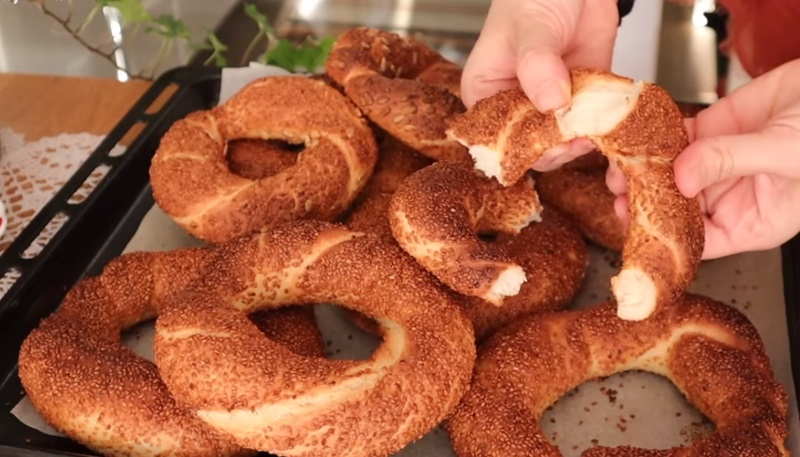
Simit, also known as rosquilla, is a round bread topped with sesame seeds or occasionally other seeds like poppy, flax, or sunflower. The characteristics of simit, such as its size, crunch, and chewiness, may vary slightly across different regions.
This delightful circular bread is a popular street food in Turkey, where vendors proudly display the freshest batches throughout the day using simit trollies or trays on their heads. The street sellers emphasize serving freshly baked simit, often still warm from the oven. Symbolizing community and resilience, simit holds cultural significance for lower and middle-class individuals in Turkey. Sometimes called susam kebabı, this circular treat represents not just a culinary delight but also cultural values, serving as a treasured symbol for Turkey's diverse population.
Boortsog
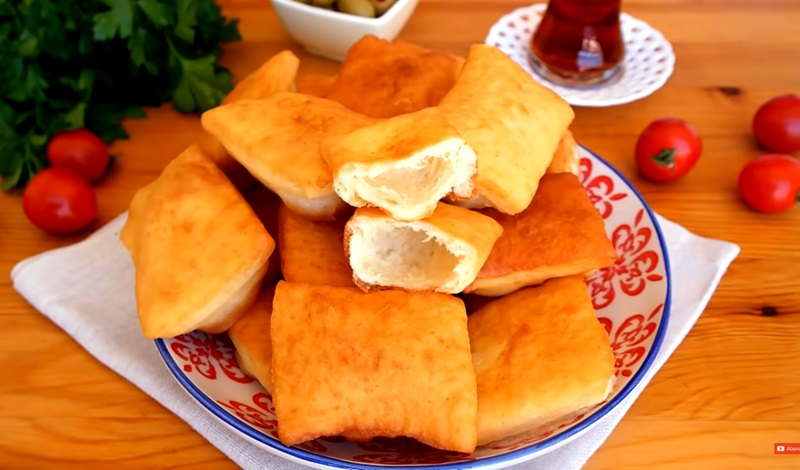
Boortsog, also known as bauyrsaq or pişmaniye, is a traditional dish in Turkish cuisine. It is a type of deep-fried bread or pastry that is commonly enjoyed as a snack or dessert. Boortsog is made by combining flour, sugar, salt, baking powder, and butter or oil to create a dough. The dough is then rolled out and cut into small, rectangular or triangular shapes before being deep-fried until golden brown. The end result is a crispy and slightly sweet pastry with a soft and fluffy interior. Boortsog is often sprinkled with powdered sugar or served with honey, jam, or cheese for added flavor. It is a versatile dish that can be enjoyed on its own or paired with tea or coffee. Boortsog has a long history in Turkish cuisine, with its origins dating back to the nomadic Turkic tribes of Central Asia. It has since become a beloved treat in Turkey and is often prepared during special occasions and festivals.
Tsoureki
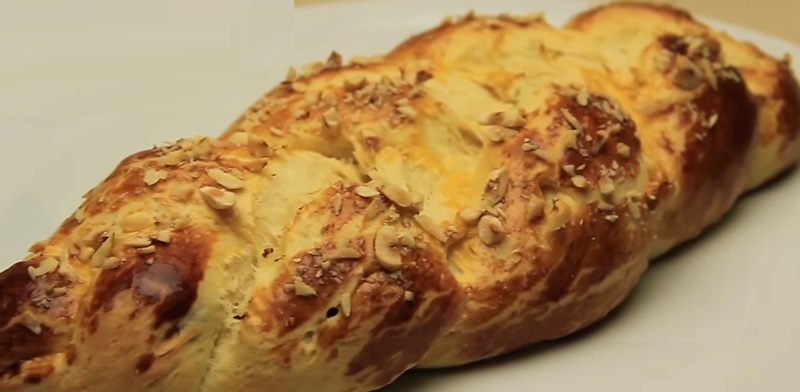
Tsoureki, also known as paskalya çöreği in Turkish, is a delectable sweet holiday bread enjoyed in Greece and Turkey. Made from a blend of flour, milk, butter, eggs, and sugar, this festive treat is rich and indulgent. Its distinctive flavor often comes from the addition of aromatic ingredients like orange zest, mastic resin, or mahlab, which infuse the bread with a delightful fragrance and taste.
Traditionally braided or shaped into a ring, tsoureki is a centerpiece of Easter and other celebratory occasions. Its inviting golden-brown exterior reveals a tender and airy interior, ensuring each mouthful is a pleasurable delight. Whether enjoyed on its own or paired with a cup of coffee or tea, tsoureki is a beloved tradition that brings families and friends together to celebrate special moments. With its unique blend of flavors and textures, this sweet holiday bread adds a touch of warmth and joy to any festive gathering.
Bazlama
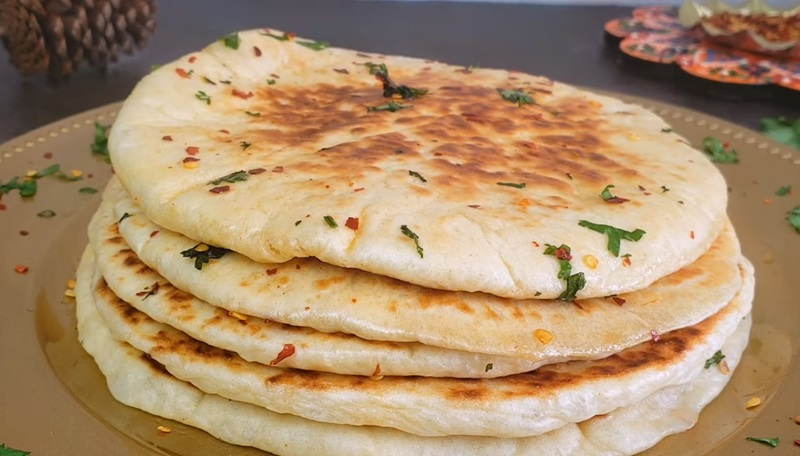
Bazlama, a staple of Turkish cuisine, is a leavened flatbread crafted from wheat flour, boasting a thickness of approximately 2 cm and diameters spanning from 10 to 25 cm. Following a fermentation period of two to three hours, the dough, typically weighing between 200 to 250 grams, is divided into balls, flattened, and cooked on a hot stove. This process involves flipping the bread to ensure both sides are evenly fried. Once baked, bazlama is best enjoyed fresh, offering a warm and wholesome treat. Its shelf life may range from several hours to a few days, contingent upon storage conditions, ensuring its availability for savored consumption over a brief duration. With its simple yet satisfying taste and versatility, bazlama holds a cherished place in Turkish culinary tradition.
Chickpea Bread
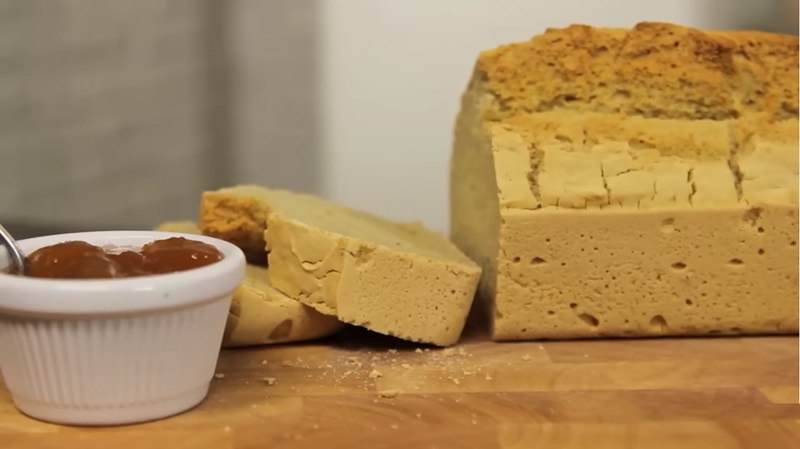
Chickpea bread, a beloved delicacy hailing from Albania and Turkey, stands out for its unique preparation method and distinctive flavor profile. Crafted from chickpea flour, this bread boasts a rich nuttiness and hearty texture that sets it apart from traditional wheat-based varieties. What truly sets chickpea bread apart is its use of a special yeast derived from chickpeas, lending it a distinctive tang and complexity. This yeast, combined with flour and water, undergoes a fermentation process overnight in a warm environment. The following day, the dough is carefully portioned, arranged on a baking tray, and baked to golden perfection. The result is a fragrant and flavorful bread, with a crisp crust giving way to a soft and chewy interior. Renowned for its rustic charm and wholesome taste, chickpea bread is a cherished part of Albanian and Turkish culinary traditions, offering a delightful alternative to conventional bread varieties.
Lalanga
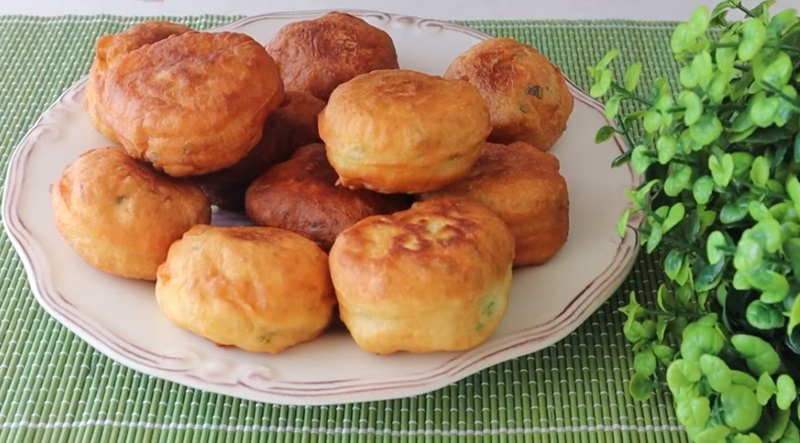
Lalanga, a beloved staple of Turkish and Greek cuisines, traces its roots back to the culinary traditions of the Byzantine and Ottoman empires. This deep-fried flatbread boasts a rich history and a delectable flavor profile that has stood the test of time. Made from a simple dough of flour, water, and sometimes yeast, lalanga is rolled out into thin sheets before being carefully deep-fried to golden perfection. The result is a crispy exterior that gives way to a soft and fluffy interior, offering a delightful contrast of textures with each bite. Lalanga is often enjoyed on its own as a savory snack or served alongside a variety of dishes, such as soups, stews, or grilled meats. Whether enjoyed as a street food or as part of a hearty meal, lalanga continues to be cherished as a symbol of tradition and culinary heritage in both Turkish and Greek cultures.
Vakfıkebir Bread
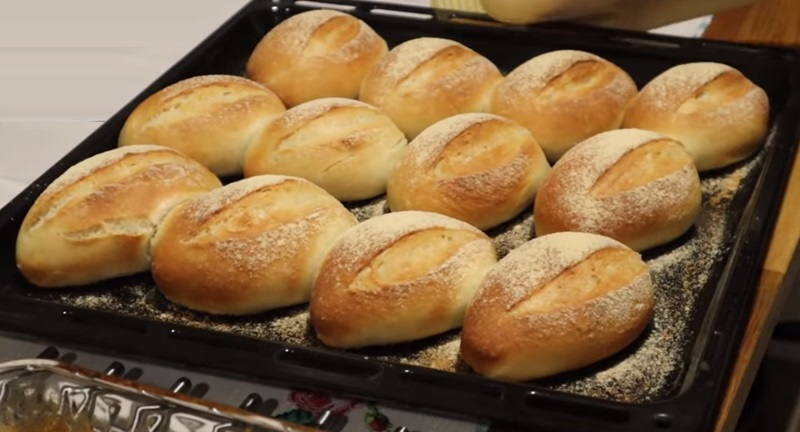
Vakfıkebir bread, renowned as "Vakfıkebir" or "Trabzon" bread across Turkey, holds a special place in the hearts of locals and travelers alike. Originating from Trabzon but now widely produced along major highways, this bread is a testament to the culinary heritage of the region. Baked in traditional wood-fired stone ovens and leavened with natural sourdough, Vakfıkebir bread boasts a unique flavor profile that sets it apart. Its distinctiveness lies not only in its taste but also in its exceptional shelf life; resistant to mold and staling, it remains fresh and flavorful long after baking. Whether enjoyed fresh out of the oven or after a few days, Vakfıkebir bread delights the senses with its hearty texture and rich aroma. A true symbol of craftsmanship and tradition, Vakfıkebir bread continues to be cherished by generations, serving as a culinary emblem of Trabzon and a beloved staple in Turkish cuisine.
Lángos

Lángos, a traditional Hungarian delicacy, has evolved over time from a simple breakfast staple to a beloved street food. Originally crafted from leftover bread dough, it was flattened and baked at the front of brick or clay ovens. Today, lángos is deep-fried until golden and crispy, creating a delightful flatbread enjoyed as a snack or meal. Commonly topped with garlic, sour cream, cheese, or various savory ingredients, it offers a satisfying blend of crunchy exterior and soft interior. Lángos retains its cultural significance, often served at markets, fairs, and festivals across Hungary. Whether enjoyed plain or adorned with flavorful toppings, this beloved Hungarian dish continues to captivate locals and visitors alike with its irresistible taste and nostalgic charm.



-1709813013.jpg)


